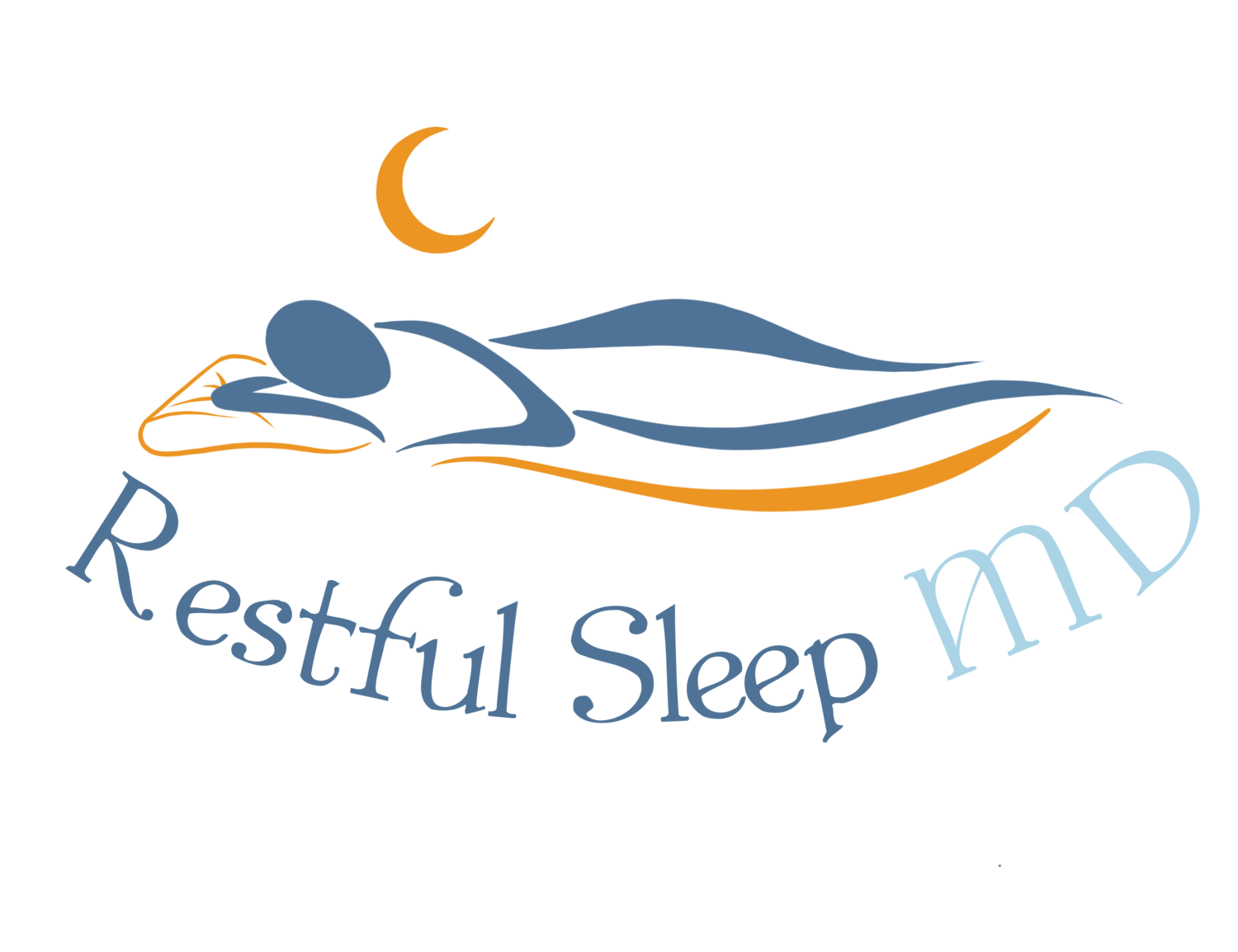Medical Sleep Problems in Children: What Every Parent Needs to Know
As a sleep physician and a mom, I know firsthand how frustrating it can be when your child is struggling to sleep and you can’t figure out why. Often, we assume that sleep problems in kids stem from habits, routines, or behavior—and while that’s often true, there’s another layer we need to talk about: medical sleep issues.
Today, let’s look at some of the most common medical conditions that could be interfering with your child’s sleep—and what to do next.
1. Gastroesophageal Reflux (GERD)
Reflux is one of the most overlooked causes of sleep disruption in infants and young children. While mild reflux (spitting up) is common and often harmless in babies, reflux disease (GERD) involves more severe symptoms that can interfere with comfort and sleep:
Frequent spit-ups after feeding
Arching the back or crying during feeding
Refusing the bottle or breast
Poor weight gain
These symptoms often worsen at night—especially when a child is laid down flat after feeding.
What can help:
Feed in small, frequent portions
Burp often during feeding
Keep baby upright for 20–30 minutes after meals
Avoid tight diapers or clothing around the abdomen
If these strategies don’t help, your pediatrician may recommend feed thickening or medication. But more importantly, be aware of how GERD might be the root cause of your child’s nighttime distress.
2. Food Allergies & Intolerances
Many parents are surprised to learn that food allergies or sensitivities—especially to dairy—can severely impact sleep. Signs include:
Blood in stool
Skin rashes
Persistent fussiness after meals
Refusal to eat
In breastfed infants, the culprit could be something in the mother’s diet. In formula-fed babies, switching to a hypoallergenic formula may help. For older children, formal allergy testing may be needed.
Sleep training won’t be successful if your child is uncomfortable from a food-related issue—so don’t overlook this.
3. Eczema (Atopic Dermatitis)
Children with eczema often struggle with sleep due to dry, itchy, and inflamed skin. Even if they can’t express it clearly, the discomfort can:
Delay sleep onset
Cause frequent nighttime wakings
Lead to increased restlessness
Helpful strategies include:
Applying heavy, petroleum-based moisturizers before bed
Using gentle, fragrance-free skincare products
Following a pediatrician-recommended skincare regimen (including possible steroid creams)
I've seen major sleep improvements in kids once we get their eczema under control.
4. Allergic Rhinitis (Seasonal or Environmental Allergies)
If your child is sneezing, has itchy eyes, or a constantly stuffy nose—especially at night—it could be allergic rhinitis. These allergies can be seasonal or year-round and can make breathing through the nose difficult during sleep.
Symptoms to watch for:
Mouth breathing
Postnasal drip
Congestion or snoring
Treatment may include:
Nasal saline rinses
Humidifier use
Antihistamines or nasal steroids (as prescribed by your doctor)
Allergen-proof pillow/mattress covers
Addressing allergies can help your child breathe—and sleep—better.
5. Asthma
Many children with asthma experience symptoms that flare up at night:
Coughing or wheezing
Shortness of breath
Restlessness in bed
Some have what’s called cough-variant asthma, where a chronic nighttime cough is the only symptom. Inhalers can help, but be aware that certain medications like albuterol can make children feel jittery and disrupt their sleep even more.
Talk to your pediatrician or a pulmonologist if you suspect asthma might be interfering with your child’s rest.
6. Obstructive Sleep Apnea (OSA)
Just like adults, children can suffer from obstructive sleep apnea, which occurs when the airway becomes blocked during sleep. In kids, this is often due to large tonsils or adenoids.
Watch for:
Habitual snoring (more than 3 nights per week)
Pauses in breathing
Gasping or choking sounds
Restless sleep or bed-wetting
Daytime irritability or attention issues
OSA can affect growth, behavior, and academic performance. A sleep study can help confirm the diagnosis. Treatment often includes tonsil/adenoid removal or CPAP in more complex cases.
7. Restless Legs Syndrome (RLS) & Periodic Limb Movement Disorder (PLMD)
Children with RLS feel uncomfortable sensations in their legs—often described as creepy-crawly or tingly—that make it hard to lie still.
Signs to look for:
Kicking or tossing/turning in bed
Requests for leg rubs
Trouble falling asleep despite being tired
This can be linked to low iron levels, so bloodwork is often the first step. In some cases, medication may be needed.
8. Narcolepsy
Though rare, narcolepsy is a serious sleep disorder that often emerges in adolescence and includes:
Excessive daytime sleepiness despite normal sleep
Sudden sleep attacks
Muscle weakness or collapses triggered by emotions (cataplexy)
Hallucinations while falling asleep or waking up
Diagnosis requires an overnight sleep study and a daytime nap test. Treatment usually involves medication and school accommodations.
Final Thoughts: Be Your Child’s Sleep Advocate
If your child isn’t sleeping well, and nothing seems to help—it may not be behavioral at all. Medical sleep issues are real, and they deserve medical attention.
Track symptoms. Log their sleep. Talk to your pediatrician. And don’t be afraid to push for answers.
At The Restful Sleep Place, we support families through this journey with compassion, education, and expert care.
📍 COME VISIT US!
200 Lakeside Drive, Suite 226 Horsham, PA 19044
🌐 BOOK YOUR APPOINTMENT ONLINE!
https://www.therestfulsleepplace.com
📞 CALL US AT: (215) 607-8297


